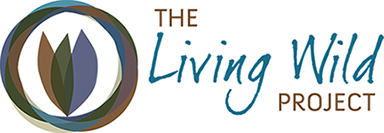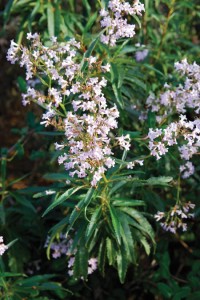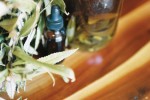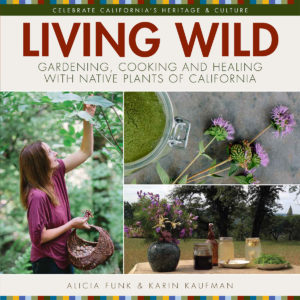Yerba Santa
WATERLEAF FAMILY
Yerba Santa Eriodictyon californicum
Habitat & Elevation Dry, flat areas, slopes or ridges below 5,500′
Collection Leaf: all seasons
Indigenous Names Mountain Maidu sawi*, jompom saywy; Konkow jompom saywy; Nisenan wadas
![]()
Yerba Santa Eriodictyon californicum
Plant type Evergreen shrub
Size 4’x4′
Light Full sun
Water Drought tolerant
Zone 5 to 10
Yerba Santa is an evergreen shrub bearing dark green, leathery leaves that are oblong to lanceolate. Clusters of small, tubular, whitish-lavender flowers bloom from May to July, depending on the elevation. The flowers attract butterflies.[28]
Yerba Santa is used for erosion control on banks and can tolerate sand, clay and serpentine soils. Plant in a sunny location alongside Bush Monkeyflower (Mimulus aurantiacus) and Sage (Salvia species).[17]
![]()
Asthma
Dry, grind and smoke leaves for asthma and colds.[2, 5]
Colds, Coughs and Sore Throats
TEA Tear 3 leaves (fresh or dry) and place into a cup with boiling water for colds or sore throat. Let steep for 15 minutes.[6] Used by Miwok, Pomo, Yuki, Yurok, Kawaiisu, Karok and Atsugewi tribes, most commonly as a tea, but the fresh leaves were also chewed.[16] Western physicians listed it as an official remedy for coughs, pneumonia and bronchitis in the U.S. Pharmacopoeia in 1894.[2, 4,5]
EXTRACT Grind 10 leaves per cup of alcohol and add to a mason jar. Shake twice daily and let steep for at least 1 month. Strain into dropper bottles, and take 1 dropperful, 3 times daily as needed.
SYRUP Boil leaves, let steep for 15 minutes, strain, and add 2 parts honey to 1 part tea.[2]
SMOKE Dry, grind, and smoke for colds and asthma.[2, 5]
Decongestant
Cover 3 – 5 leaves (fresh or dry) in a cup with boiling water and let steep for 15 minutes to reduce mucous.[6] Used by Miwok, Pomo and Yuki tribes and by doctors who listed it as an official remedy in the U.S. Pharmacopoeia in 1894.[5,10]
Poison Oak
Make a tea for external use, with 5 leaves per cup of water. Rinse infected areas immediately and apply as needed.
Rheumatism, Sore Muscles, Joint Inflammation
Steep 5 young leaves in hot water, soak a washcloth as a compress and apply to area of pain.[4, 5]
Strength
Chew leaves to moisten mouth and drink tea to purify blood.[4]
Wounds
Mash leaves and apply to cuts and wounds to reduce swelling and relieve pain.[4]
Indigenous Use
All three groups (Maidu, Konkow and Nisenan) used Yerba Santa for colds and bad coughs. The Konkow boiled the leaves and drank the tea. The Nisenan heated Yerba Santa and then inhaled the steam for colds and dizziness.







